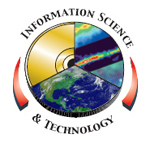
Please Note: The content on this page is not maintained after the colloquium event is completed. As such, some links may no longer be functional.
Dr. Richard B. Gomez
Managing the Chemical/Biological Threat by Novel Remote Sensing Methods
Wednesday, April 18, 2007
Building 3 Auditorium - 3:30 PM
Dr. Gomez presentation addresses novel remote sensing methods to manage the real threat of chemical and biological agents being used against our military forces or civilian population. The potential use of hyperspectral imaging technology for standoff detection of chemical and biological agents in terrorism defense applications will be address. In particular it focuses on the uses of hyperspectral imaging technology to detect and monitor chemical and biological attacks. In so doing it examines current technologies, their advantages and disadvantages, and investigates the possible role of hyperspectral imaging for homeland security applications. The presentation also addresses and offers applicable solutions for several of the potential challenges that currently create barriers to the full use of hyperspectral technology in the standoff detection of likely available chemical and biological agents. Self-adaptive remote sensing application strategies to operationally process and exploit spectral information on-board smart remote sensing satellites or drones in real time will be presented. The goal is to greatly increase onboard processing capabilities and reduce data volumes for hyperspectral remote sensing systems by incorporating an intelligent-based approach. The approach focuses on the future development of hardware and software methods using an architecture based on Reconfigurable Computers that work more like the human brain and body. These smart satellites or drones will be self-sensing, self-repairing, and self-adaptive. If something is not exactly right, the smart satellite or drone will not need a signal from ground control. The spacecraft or drone itself decides what's best and then take the necessary action to address the problem. It’s a revolutionary means to process and exploit on board, huge amounts of hyperspectral data without the need to have an expert spectral analyst in the loop. Special attention will be paid to spectral libraries and novel usage of exemplar spectra. This involves techniques that are beyond the forefront of current database research. NASA has recognized the value of using a hyperspectral sensor flying with or slightly behind of the imaging sensor platform to identify features of interest to be processed. The hyperspectral sensor is used to identify the presence of a feature and verify its composition. The employment of a near real time feature recognition system on the hyperspectral sensing satellite or drone is invaluable. It is envision that a reconfigurable architecture incorporating evolutionary algorithms will be developed knowing that self-adaptive smart satellites or drones may be the key to success.
IS &T Colloquium Committee Host: Jim Tilton & Jacqueline LeMoigne
